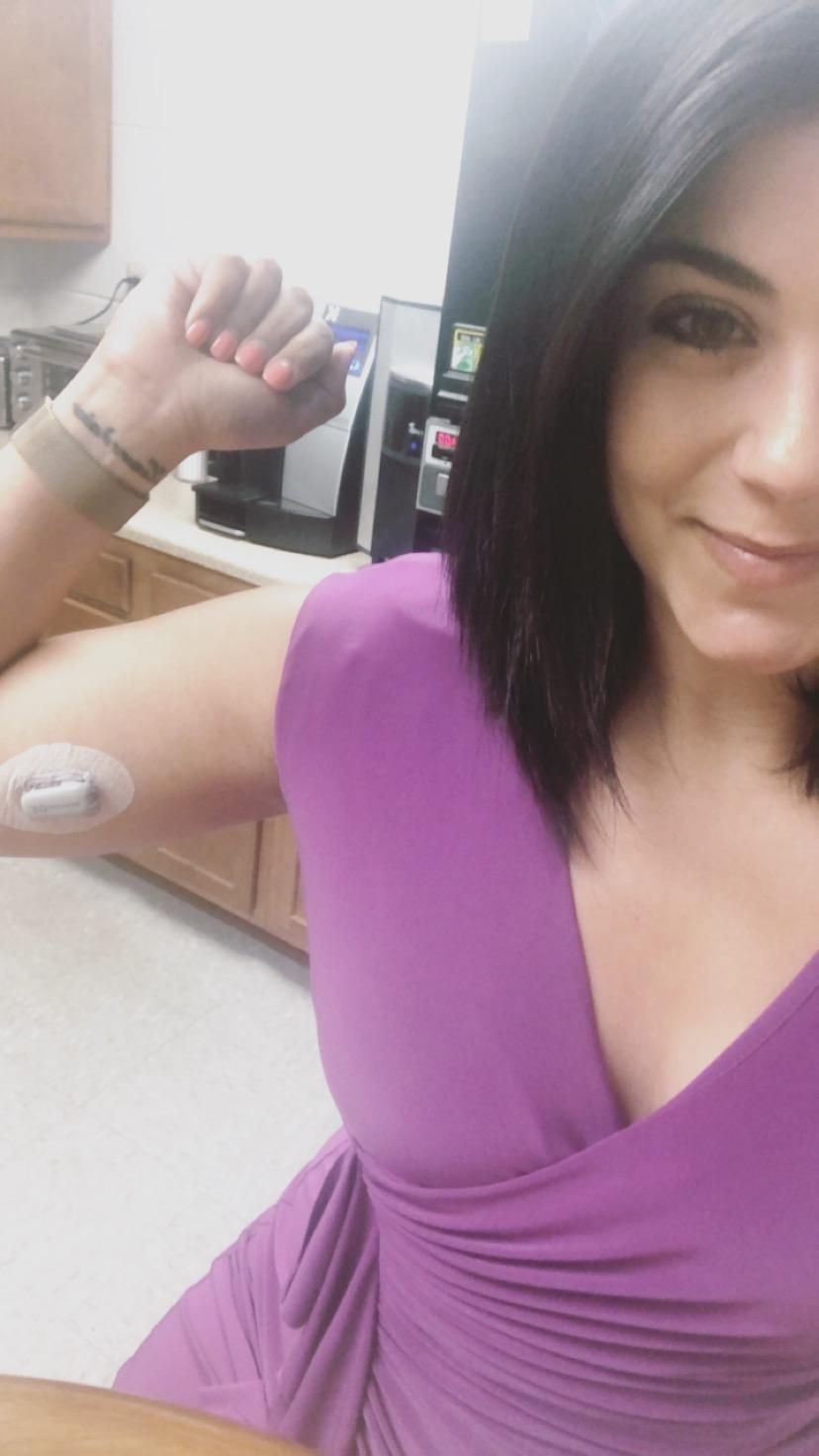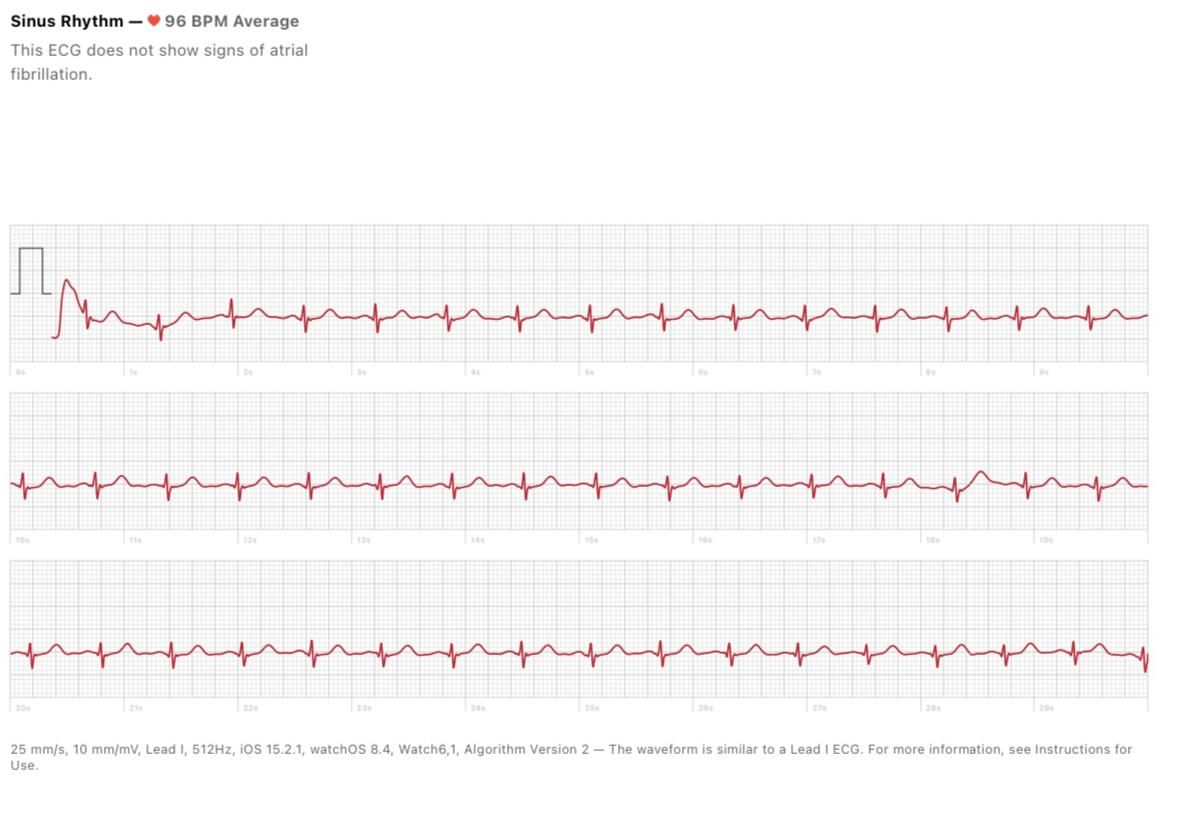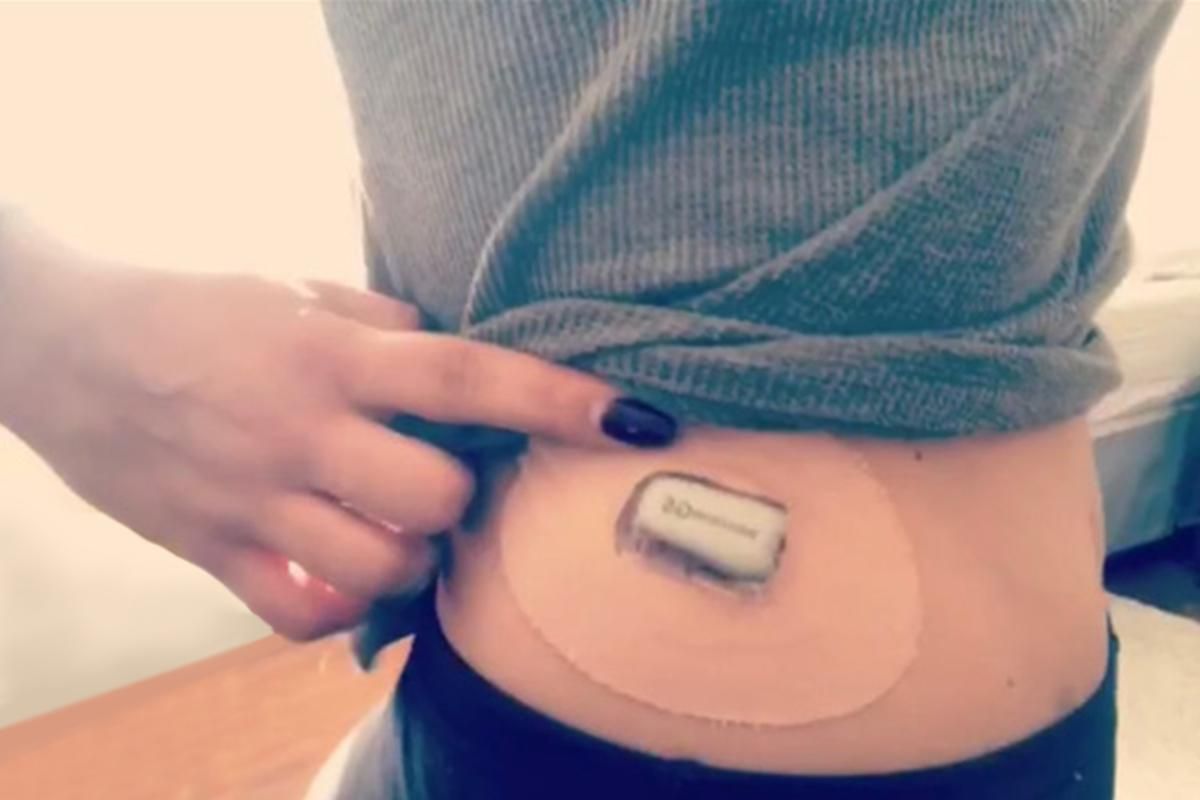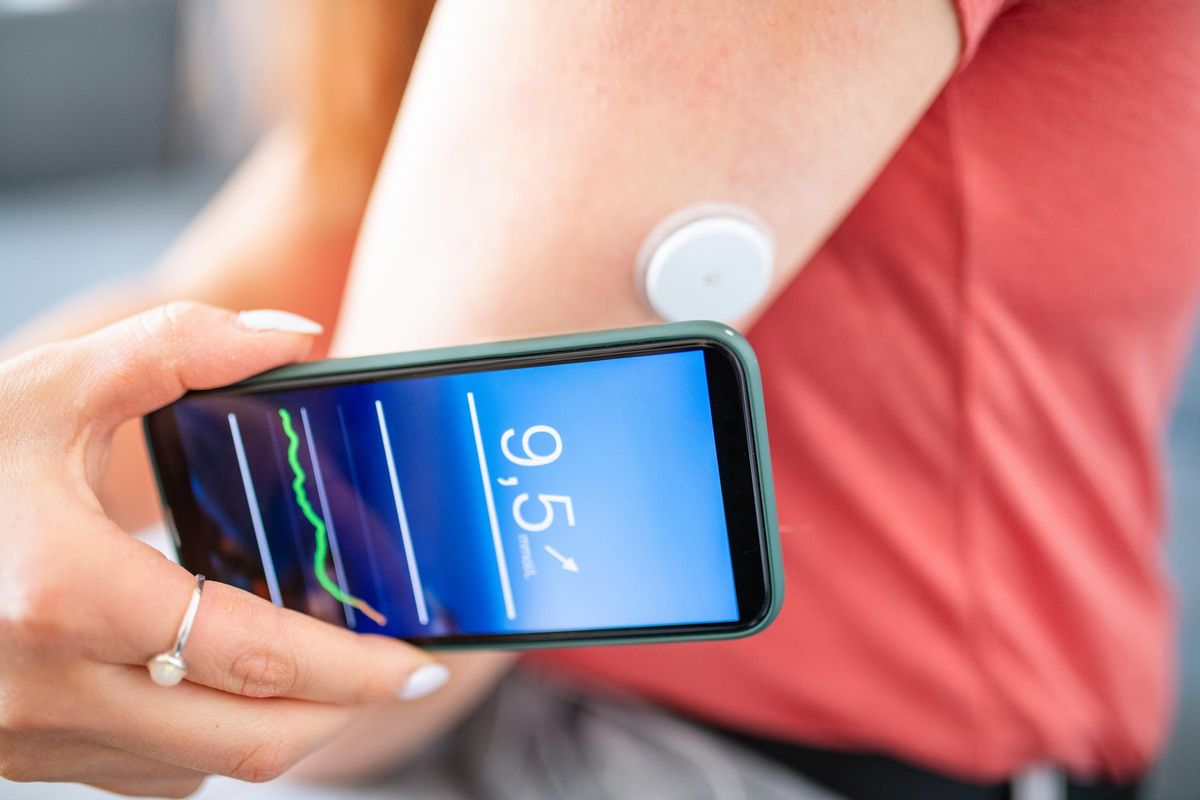Grace Fernandez's biggest fear is dying in her sleep. It's a fear that could easily become a reality for the 33-year-old and the approximately 1.6 million other Americans living with Type 1 diabetes. Type 1 diabetes is an autoimmune disease where the pancreas produces little or no insulin, a hormone needed to allow sugar (glucose) to enter cells to produce energy. People living with the chronic condition face many obstacles, including keeping their blood sugar stable through the night. If a Type 1 diabetic's blood sugar drops too low while sleeping, they could pass away, which is one reason medical technology is so vital to this population.
"I can't imagine having Type 1 and not having access to these devices," Fernandez said.
The medical technology Fernandez uses includes a tubeless, wireless and Bluetooth-enabled insulin pump and a continuous glucose monitor (CGM). Fernandez wears both on her body 24 hours a day, seven days a week.

Grace Fernandez, 2022 (Photo/Matt Ossowski)
Her CGM reads her glucose levels every five minutes and sends the information to her iPhone. At night, if her glucose levels drop below a certain threshold, an alarm on the CGM will sound. Once awake, Fernandez can drink juice or eat something to stabilize her glucose levels. She can also program the device to notify someone else, if her blood sugar drops too low.
"The pump I wear is attached to my body and automatic. I load it with the insulin that I know that I need for three days, and it administers the right amount throughout the day to keep me stable," Fernandez said. "It's pretty much automated except right before every meal; I still have to bolus or inject myself with the right amount of insulin so that I can consume carbohydrates or … sugar I'm eating." (A bolus, in this case, is a dose of insulin taken to prevent a rise in blood glucose.)

Grace Fernandez and her continuous glucose monitor, 2019
These medical technologies have drastically improved the patient experience for people with diabetes. Fernandez, diagnosed with Type 1 diabetes six years ago, has only known life with these technologies. But her older brother, who has had the disease since he was a child, didn't have these devices growing up. Instead, he had to prick his finger and use a handheld glucometer throughout the day to check his glucose levels.
Medical technology, or any tools, digital, electronic or hardware and gadgets that help people with their health, have exploded in recent years. Whether it’s used to treat a medical condition or to monitor one's health and exercise as many do with their smart watches, medical technology has put patients in the drivers’ seats of their health.
According to Monica Mallampalli, Ph.D. senior scientific advisor at HealthyWomen, “Med tech is changing healthcare and particularly women's health. A one-size-fits-all approach doesn't work for everyone, especially when you take physiological and biological differences into consideration, and med tech gives us the opportunity to provide personalized care for everyone.”
Deidre Keeves, the director of connected health at UCLA Health IT, who has worked in the medical technology space for 12 years, said most people are using some type of medical technology. For example, she said, at UCLA, 70% of patients use the patient portal or some sort of tool within the portal to track or manage their healthcare.
Other medical technologies used by UCLA Health System patients are examples of the types of medical technologies that exist today. For those who need cardiac or thoracic monitoring, the hospital system has a program where kits are sent home with patients, including a tablet, Bluetooth scale, pulse oximeter, blood pressure cuff and even an EKG monitor. Also, according to Keeves, UCLA Health System is in the process of implementing a product called "Care Companion," a tool that patients can use on their smartphones for managing certain chronic conditions or acute conditions.
One use of the care companion tool is for pregnant women with gestational diabetes to share their blood sugar readings with their healthcare providers. Clinical tools like this, that exist specifically for women, are part of a new craze called “femtech,” where startups and tech companies create products that address women's healthcare needs.
Today, there are apps and technology for women to track their menstruation and fertility and to help with pregnancy, breastfeeding and menopause. Women also use Apple Health to track exercise, sleep, steps and other activities. (As beneficial as the apps are, they come with a price too. It’s widely known that these apps also track your online activity. So, users need to decide if the benefits outweigh the privacy intrusion.)
Several years ago, Sara Baumgarten started using an Apple Watch to track her fitness and health. But soon, her watch alerted her to something that was wrong. Baumgarten noticed that when she ran and worked out, her heart would race, sometimes over 250 beats per minute (BPM). She eventually got checked, only to find out that she was going into atrial fibrillation (AFIB), an irregular, often rapid heart rate that commonly causes poor blood flow.
Baumgarten underwent surgery and now uses her Apple Watch and iPhone to obtain a mobile electrocardiogram (ECG) for her heart's electrical activity.

One of Sarah Baumgarten’s mobile electrocardiogram reports, 2022
"I don't think people realize, but the newer watches have a spot where you can hold your thumb on a specific part of your watch, and it's basically a mobile EKG …," Baumgarten said. “And if I am in AFIB, then I know that I need to seek emergency care pretty quickly to help get my heart back into rhythm."
Who has access to medical technology?
Using medical technology in healthcare is becoming the norm, but many communities don't have access to life-changing and life-saving tech.
Alejandra Casillas, an assistant professor of medicine at UCLA, works with marginalized communities that often don't have access to medical tech. These groups include low-income households, the elderly, immigrants whose first language isn't English, the uninsured or underinsured, and people with less than a high school education.
"In these demographics, we see higher rates of people not having access to technology in general," she said. "So they don’t even have the internet at home because they don't have good broadband coverage in their house because they come from these low-income communities, where infrastructure doesn't exist."
"So the digital divide is more prominent amongst these populations. And then you add the layer of health literacy. So the barrier that we see is that a lot of times these digital health platforms exist at literacy levels that are way higher than you would expect."
When communities lack access to the latest and greatest health and medical technology, it furthers the gap between them and those who do have access — and creates wider disparities, according to Casillas. She said it's also a lost opportunity for a population with the most potential to benefit from digital health, another type of medical technology.
"These patients that we serve are working in jobs where they can't miss a day of work, where … every little minute counts even more so," Casillas said. "For example, for a simple question that could be easily answered through a patient portal or for a simple medication refill, sometimes we see these patients, taking multiple buses and coming to the clinic. They wait in line for hours to refill medication at one of our safety net clinic pharmacies."
"This is valuable time and resources these patients could be saving if they had access to digital health."
Casillas also said historically, these communities have had little to no access to preventive health services, and digital health could serve to remind them to do things like get a flu shot or schedule a mammogram.
According to Casillas, there are ways to combat the divide, including tech companies developing technology with marginalized populations in mind. Casillas said healthcare systems and professionals also need to demand more from the tech companies building the technology.
For patients like Fernandez, medical technologies often come with a hefty cost. Diabetes technology, like Fernandez’s pump and CGM, cost thousands of dollars. Insurance might help, but the price depends on how insurance companies classify various technologies that could lower or raise the cost for the consumer and on your specific plan benefits.
Today, Fernandez's health insurance company covers all her diabetes technologies, but she's had other insurances that only covered some or none of the hefty price tag. At one point, she even went $10,000 into debt trying to cover everything.

Fernandez and her continuous glucose monitor, 2019
"If you don't advocate for yourself, you can very easily be taken advantage of. When I transitioned out of one job and into another, my new job's insurance was a lot better. But depending on the insurance, these devices can get covered as a prescription or durable medical equipment. And so it just depends on how the insurance company wants to treat it; it can completely change the price," Fernandez said.
As medical technology advances and telehealth becomes the norm, companies think of new ways to innovate.
Fernandez is hopeful for the future of diabetes technology. In 2020, the two companies she purchases her CGM and insulin pump from announced that they are merging to create two devices that will communicate via Bluetooth to create a more automatic system.
"Right now, [one company] gives me my CGM readings, and I can see them on my watch. But I still have to go into my insulin pump receiver and add the amount of insulin my phone is telling me to add for whatever I am about to eat," Fernandez said.
"But this gives me a lot of hope because these new devices are going to be able to do a lot of thinking for you. They call it the closest thing to an artificial pancreas. So this announcement is game-changing."






